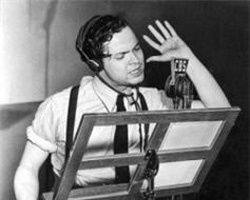1930’s:
The Great Depression dominated most of this decade; Prohibition ends in 1934
Franklin Delano Roosevelt renews hope by using the radio (to conduct fireside chats) and starting a series of programs to boost the economy, otherwise known as the New Deal
Fascism was on the rise: Hitler and Nazi party came to power in Germany; Benito Mussolini rose to power in Italy; Francisco Franco’s Falangists gained power in Spain; second World War in the century started 1939
The ’30s are often referred to as the Age of the Columnists (the signed, regular editorial spot for writers on social and cultural issues of the day included everyone from comedians to First Ladies)
Radio became the dominant electronic medium for news reporting; television was newly invented; photojournalism on the rise in popularity

Radio: theatre of the mind
1940’s:
World War II updates were broadcast daily in the U.S by war correspondents. Journalists like Edward R. Murrow (who reported on behalf of CBS) and his boys, brought the war home; Murrow also began the transition from radio to television
This was the last decade when radio was dominant
Television began a media revolution and opened up the nation to a new world of visual communication
Comic books were wildly successful because they provided cheap and exciting entertainment; also popular within the military for two reasons:
- the soldiers were young
- comic books were easy to carry
The Office of Censorship requested that news institutions adhere to a strict voluntary censorship code, and also began monitoring news entering and leaving the country; though, The War Department directed most propaganda broadcasts at Germany and Japan, propaganda techniques were utilized to in the U.S. as well

Edward R. Murrow, reporting from London
1950’s:
Commercials became the major advertisement medium and were beginning to be filmed and edited in advance; increased purchases of television sets indicated the mid-century society’s materialism
Beatniks turned against that materialism, did drugs and advocated sexual freedom; rock ‘n roll music began
Cold War intensified when North Korea invaded South Korea at the 38th Parallel – Truman ordered MacArthur to push back North Korea but China interceded to push the U.S back to the 38th Parallel; Murrow covered the Red Scare
Radio changed programming to include music, news, sports and weather; magazines became specialized for certain audiences
Walter Cronkite popularized the term “anchor man” when he was elected anchor for CBS in covering the 1952 Democratic and Republican conventions

Walter Cronkite, first news anchor


Leave a response